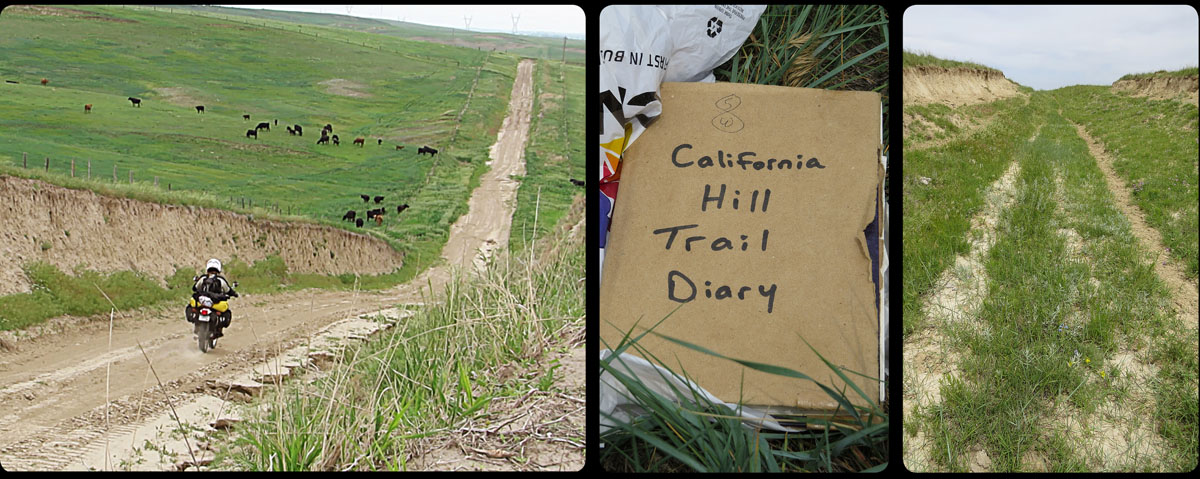Right around this time, halfway in June, the emigrants reached the point where they had to cross the South Platte. They did this at the present town of Brule. The hill they had to climb was named after the crossing: California Hill. After about a month of traveling across fairly level ground, 450 miles from where they left Independence, they faced the first geological hurdle.
In the heat of the day I started my search for the ruts of the wagons that should still be here somewhere on the hills. Right after the historical marker along the highway, I found the dirt road that should take me there (‘minimum maintenance’, this could be fun). The further I rode , the deeper the holes got. As far as my guts allowed, I looked around, trying to find the entrance in the barbed wire fence.
‘It should have an old mailbox’, the campground manager had explained to me. For a few miles I rode the dirt road, but no mailbox. From up on the hills, cows where staring at me while I searched the pastures.
Back it went, down the road. ‘Could this be it?, I wondered, as I stopped and looked back. ‘This road through the hills?’ A drop of sweat ran from under my helmet, into my neck.
I saw a truck coming my way. I raised my hand to the driver, a young man somewhere in his thirties, deep tan, rough beard, and of course a baseball cap, because this is Nebraska, after all.
‘Wagon ruts? No, they are along highway 30. Ride this dirt road to the end, to the 30, and then you’ll find it on the north of 30. There’s a sign where the entrance is, you can see it from the road. You can’t miss it’.
You can’t miss it. Will I ever learn to mistrust people who say that? After riding the 30 to and fro for about 5 miles, I was right back where I started about an hour ago; next to the historical marker. But still no ruts.
I decided to do what I should have done an hour ago but what I’d stubbornly been postponing: I dug up Julie Fanselow’s guide from my pack. Following her clear instructions, it took me about five minutes to find the entrance in the fence. In the mailbox I found a small book, wrapped in a plastic bag, with names of people who were here before me. It felt like finding an old treasure.
I had to walk into the field to find the actual ruts, but not far from where I parked the bike I found them; 150 years old and still visible. The first real evidence of the trail on my trip, and it really touched me. This is where these people walked, with everything they owned; their children, livestock, food, and as much furniture as would fit in the wagon.
I looked around at the landscape. I felt the same wind that blew here 150 years ago, blowing along the same hills that are covered with the same grass and flowers. The only thing that has changed since the days of the trail are the cows grazing here now and who are watching me, probably wondering why I would possibly want to be photographing their food.

